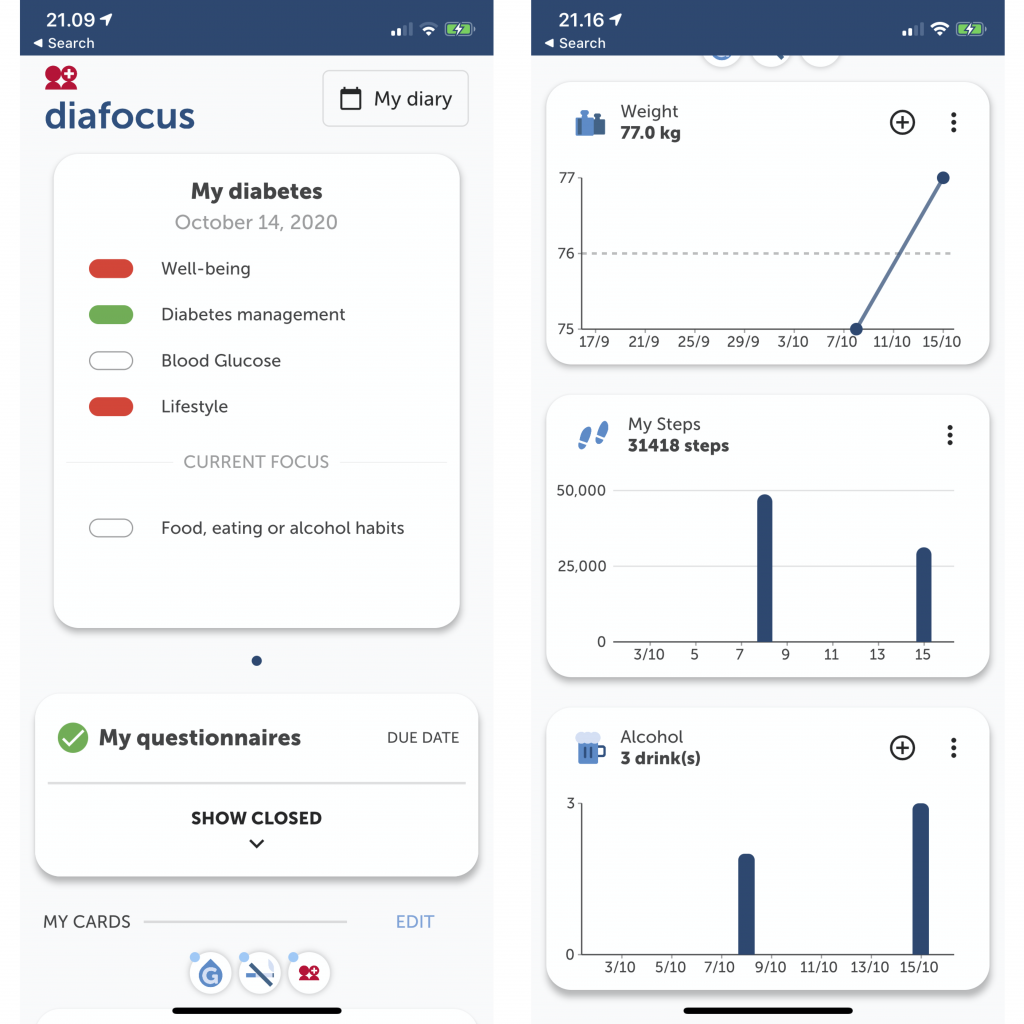The DiaFocus system provides improved and structured communication between people with type-2 diabetes mellitus (T2DM) and healthcare professionals (HCP). The purpose of the study is to assess the system’s feasibility, usefulness, and usability in the context of T2DM at home and during everyday activities.
Aim
The aim of the DiaFocus system is threefold:
- To provide a platform that collects information about the health-, behavior and emotional habits, and status of people with type-2 diabetes. The includes sensor-based data gathered from smartphone applications and self-reported assessments of well-being, emotional distress, and diabetes-related health behavior.
- To improve communication between people with T2DM and their HCPs during regular consultations, emphasizing psycho-social factors and combination with health data, adapting to the Integrated Personalized Diabetes Management (iPDM) cycle.
- To allow personalized planning and goal setting in a patient-centered collaboration between a person with T2DM and their HCP, motivating improved diabetes management, including quality of life and health outcomes.

Technical use of CARP
The DiaFocus app is implemented using Flutter and is available for both Android and iOS.
The DiaFocus system makes use of most CARP components, including:
- CARP Mobile Sensing for mobile sensing of location, activity, step counts, and similar data. It also uses CAMS for integration with Apple Health and Google Fit to collect blood glucose data from the AccuCheck device.
- Research Package for collecting informed consent and issuing a wide range of diabetes-related questionnaires and surveys.
All data is uploaded and managed in CANS hosted by CACHET. A daily report of a patient’s data is accessible from CANS to the HCPs.
Background
DiaFocus is developed in Copenhagen Center for Health Technology (CACHET) as part of the Integrated Personalized Diabetes Management Goes Europe (iPDM-GO) project funded by EIT Health, involving a range of European partners.
The research team behind developing the system includes designers and engineers from The Technical University of Denmark (DTU), clinical staff at Steno Diabetes Center Copenhagen (SDCC), healthcare professionals at Center for Diabetes, City of Copenhagen (CFD), and health behavior experts at The University of Copenhagen (UCPH).
References
The DiaFocus system and results from a technical feasibility study have been published in this paper:
Bardram, J. E., Cramer-Petersen, C., Maxhuni, A., Christensen, M. V., Bækgaard, P., Persson, D. R., … & Jones, A. (2022). DiaFocus: A Personal Health Technology for Adaptive Assessment in Long-Term Management of Type 2 Diabetes. ACM Transactions on Computing for Healthcare.